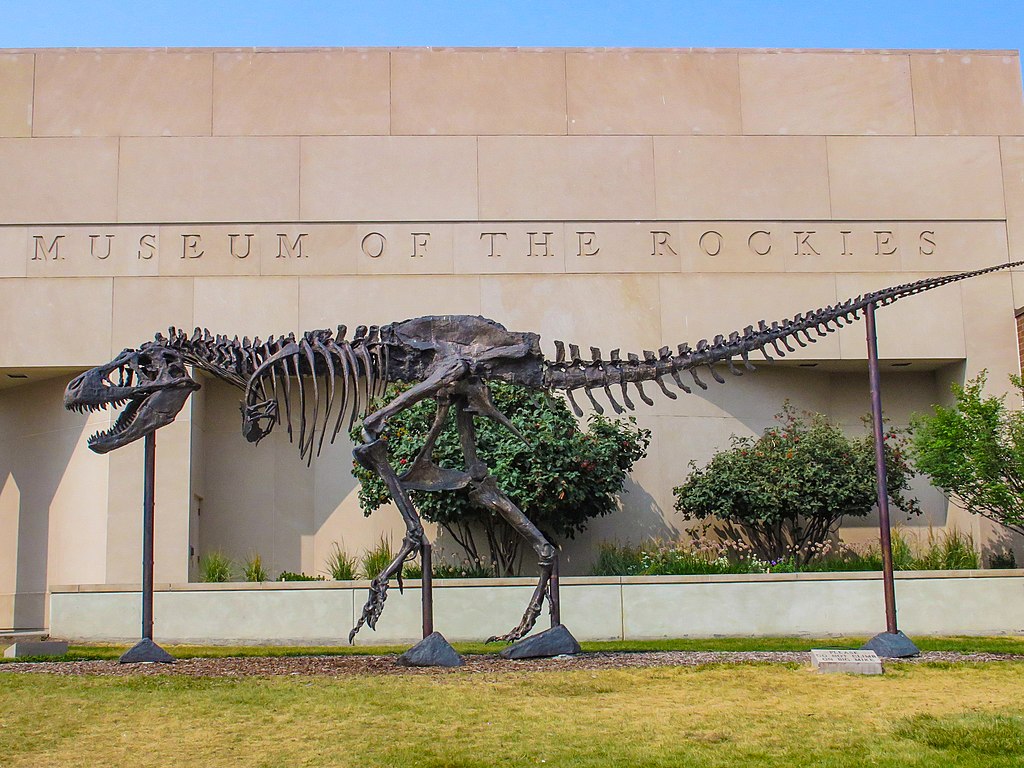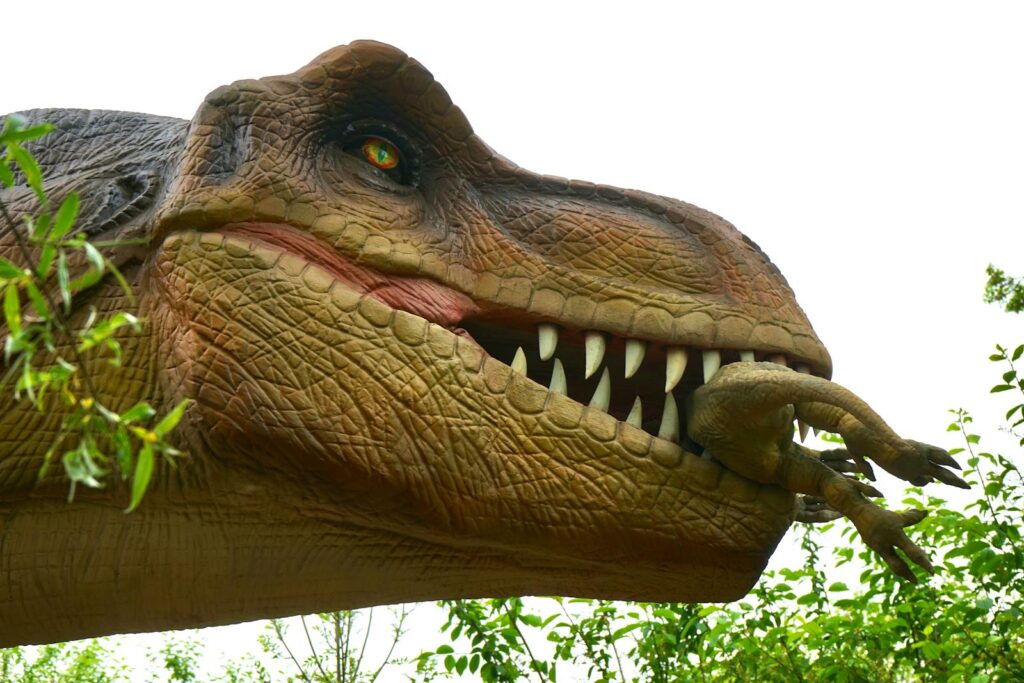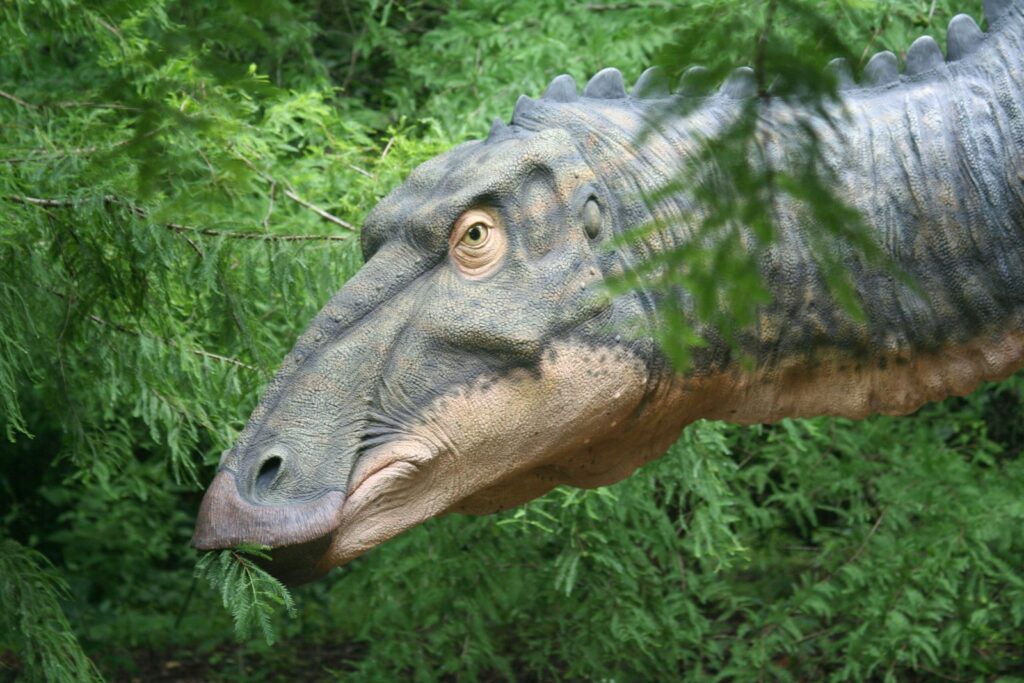Jack Horner stands as one of the most influential figures in modern paleontology, whose revolutionary discoveries and unconventional theories transformed our understanding of dinosaurs. Beyond his scientific contributions, Horner gained widespread fame as the technical advisor for the Jurassic Park film franchise and served as the primary inspiration for the character of Dr. Alan Grant. His remarkable journey from a dyslexic college dropout to a world-renowned paleontologist exemplifies persistence and passion for science. Through his groundbreaking fieldwork in Montana and controversial theories about dinosaur behavior, Horner has fundamentally reshaped how we envision these ancient creatures and their world, bringing paleontology into popular consciousness like few scientists before him.
Early Life and Struggles with Dyslexia

Born on June 15, 1946, in Shelby, Montana, Jack Horner developed a fascination with fossils at an extraordinarily young age, discovering his first dinosaur bone at just eight years old. Despite his early passion and obvious talent for paleontology, Horner’s academic journey was fraught with challenges due to undiagnosed dyslexia. This learning disability made traditional schooling exceptionally difficult, resulting in poor grades that belied his natural intelligence and scientific aptitude. Horner struggled through his education, eventually attending the University of Montana but never completing his undergraduate degree due to his reading difficulties. His perseverance through these educational obstacles would later become an inspiration for those with learning disabilities, demonstrating that academic credentials aren’t always necessary for scientific greatness. Horner’s early struggles shaped his hands-on approach to paleontology and his later emphasis on observational skills over textbook knowledge.
The Path to Professional Paleontology

Jack Horner’s entry into professional paleontology followed an unconventional route that circumvented his lack of formal academic credentials. After serving in the Marines during the Vietnam War, Horner returned to his passion for fossils, securing a position as a technician at Princeton University’s Natural History Museum in the early 1970s. Despite lacking advanced degrees, Horner’s exceptional field skills and intuitive understanding of fossils quickly earned him respect among academic paleontologists. His breakthrough came in 1978 when he discovered the first dinosaur eggs and embryos in North America at a site called “Egg Mountain” in Montana. This monumental discovery immediately established his reputation in the field, demonstrating that practical expertise could sometimes outweigh formal education. Princeton recognized his extraordinary contributions by eventually making him an honorary doctorate, allowing him to officially assume the title “Dr. Horner” despite never having completed a traditional Ph.D. program. Horner’s unorthodox career path has since inspired many aspiring scientists with learning disabilities to pursue their passions regardless of academic challenges.
Discovery of Maiasaura and Evidence of Parental Care

In 1978, Horner and his research partner Bob Makela made a discovery that would revolutionize our understanding of dinosaur behavior – the remains of Maiasaura peeblesorum, whose name translates to “good mother lizard.” This duck-billed dinosaur species was found alongside nests containing eggs, embryos, and juvenile specimens of varying ages, providing the first definitive evidence of parental care among dinosaurs. The arrangement of the fossils suggested that adult Maiasaura had constructed nests, laid eggs, and most remarkably, cared for their young after hatching. Horner noted that the leg bones of hatchlings were underdeveloped, indicating they couldn’t have left the nest immediately after birth, implying parents must have brought food to the nest. This groundbreaking discovery directly contradicted the prevailing view of dinosaurs as cold-blooded, primitive reptiles with minimal parental investment. The Maiasaura findings fundamentally altered paleontological thinking, suggesting that at least some dinosaur species exhibited complex social behaviors more akin to modern birds than reptiles. This discovery remains one of Horner’s most significant contributions to dinosaur paleobiology, reshaping our image of these ancient creatures.
The Montana Dinosaur Renaissance

Jack Horner spearheaded what many consider the “Montana Dinosaur Renaissance,” transforming the state into one of the world’s premier destinations for dinosaur paleontology. As curator of paleontology at the Museum of the Rockies in Bozeman, Montana, Horner built an institution that now houses one of the largest dinosaur fossil collections in the world, with particular emphasis on specimens from the Late Cretaceous period. His fieldwork throughout the state, especially in the fossil-rich Two Medicine and Hell Creek Formations, has yielded dozens of important discoveries, including some of the best-preserved Tyrannosaurus rex specimens ever found. Under Horner’s guidance, Montana became the epicenter for revolutionary theories about dinosaur behavior, growth, and evolution. The Museum of the Rockies developed innovative displays that reflected Horner’s progressive views on dinosaurs, showing them as active, social animals rather than sluggish reptiles. Through his extensive excavations and research in the region, Horner effectively transformed Montana from a paleontological backwater into a global center for dinosaur research, drawing scientists and fossil enthusiasts from around the world to study its rich Mesozoic deposits.
Theories on Dinosaur Growth and Development

One of Horner’s most significant scientific contributions has been his pioneering research into dinosaur growth patterns and development. By meticulously studying dinosaur bone microstructure—cutting thin sections of fossilized bone and examining their cellular composition under microscopes—Horner and his colleagues revolutionized our understanding of how dinosaurs grew. His research revealed that many dinosaurs, particularly large species like Tyrannosaurus rex, experienced rapid growth spurts similar to modern birds rather than the gradual, continuous growth seen in reptiles. This work demonstrated that T. rex could grow from a relatively small juvenile to a massive adult in under 20 years, adding as much as 5 pounds per day during peak growth periods. Horner’s developmental studies also led to his identification of several “growth series” of dinosaurs, showing how dramatic physical changes occurred throughout life stages, sometimes leading paleontologists to mistakenly classify different growth stages as separate species. Perhaps most controversially, Horner proposed that many dinosaur species previously considered distinct might actually represent different growth stages of already-known dinosaurs, suggesting the diversity of dinosaur species might be overestimated. His meticulous approach to studying dinosaur growth has fundamentally changed how paleontologists interpret the fossil record.
The Origin of Birds Theory and Dinosaur Evolution

Jack Horner has been a vocal advocate for the evolutionary connection between dinosaurs and birds, contributing substantial evidence to what has become the scientific consensus. His research on theropod dinosaurs—the group that includes Tyrannosaurus and Velociraptor—helped establish the now-widespread understanding that birds are effectively living dinosaurs, having evolved from small, feathered theropod ancestors. Horner’s work on dinosaur growth rates, warm-bloodedness, and complex behaviors all pointed toward biological similarities with birds rather than reptiles. He was among the early supporters of the theory that many non-avian dinosaurs possessed feathers or feather-like structures, a position now confirmed by numerous fossil discoveries from China and elsewhere. Horner’s evolutionary perspective also informed his controversial “reverse evolution” chicken project, where he attempted to activate dormant dinosaur genetic traits in modern chickens. While some paleontologists initially resisted the dinosaur-bird connection, Horner’s persistent advocacy and research contributed significantly to its widespread acceptance. His evolutionary framework helps explain the presence of bird-like features in many dinosaur species, including hollow bones, wishbones, and nesting behaviors, providing a coherent narrative for the transition from dinosaurs to modern birds.
The Controversial T. rex Scavenger Hypothesis

In the 1990s, Horner proposed one of his most controversial theories—that Tyrannosaurus rex was primarily a scavenger rather than an active predator. Breaking from the popular image of T. rex as the ultimate predator, Horner pointed to several anatomical features that he believed supported a scavenging lifestyle, including the dinosaur’s disproportionately tiny arms (which would have been ineffective in holding struggling prey), its exceptional sense of smell (useful for detecting carcasses), and its bone-crushing bite force (ideal for extracting marrow from already-dead animals). This hypothesis generated significant scientific debate and media attention, with many paleontologists arguing that T. rex was more likely an opportunistic hunter-scavenger, similar to modern hyenas or lions. Despite facing considerable opposition from colleagues and public resistance to reimagining this iconic dinosaur, Horner maintained that questioning established assumptions is essential to scientific progress. While few paleontologists today accept the pure scavenger hypothesis, Horner’s willingness to challenge popular conceptions forced the field to reexamine the evidence and develop more nuanced views of T. rex’s feeding behavior. The controversy demonstrated Horner’s penchant for provocative theories that stimulate scientific discourse, even when they don’t achieve consensus.
Collaboration with the Jurassic Park Franchise

Jack Horner’s relationship with Hollywood began when director Steven Spielberg hired him as the technical advisor for the original 1993 “Jurassic Park” film, a role he has maintained throughout the franchise. Horner worked closely with Spielberg to ensure the dinosaurs reflected the most current scientific understanding, though he acknowledges numerous instances where scientific accuracy was sacrificed for dramatic effect. The character of Dr. Alan Grant, portrayed by Sam Neill, was largely based on Horner himself, from his passion for fieldwork to his preference for hands-on discovery over computational methods. Beyond merely consulting on dinosaur appearances, Horner contributed scientific concepts that became central to the films’ narratives, including the theory that dinosaurs evolved into birds, which features prominently in later installments. His influence extended to the creation of fictional dinosaurs like the Velociraptor, which in the films are much larger than their historical counterparts and lacking feathers—a creative decision Horner advised against but was overruled for visual impact. Despite these scientific compromises, Horner has consistently maintained that the films’ overall contribution to public interest in paleontology outweighs their inaccuracies, noting how “Jurassic Park” inspired a generation of young scientists to pursue careers in dinosaur research.
Educational Philosophy and Museum Work

Throughout his career, Jack Horner has championed an educational philosophy centered on hands-on learning and accessibility, directly influenced by his own experiences with dyslexia. As the curator of paleontology at the Museum of the Rockies for over three decades, Horner revolutionized how dinosaur exhibits are presented to the public, focusing on telling comprehensive stories about dinosaur ecology and behavior rather than simply displaying impressive skeletons. He pioneered interactive exhibits that invite visitors to think like paleontologists, featuring partially excavated fossils and explanations of how scientists interpret evidence. Horner deliberately designed exhibitions to challenge visitor preconceptions about dinosaurs, presenting them as active, social animals rather than lumbering monsters. His educational approach extends beyond museum walls through his celebrated field expedition program, which allows volunteers with no prior experience to participate in actual dinosaur digs. Horner has consistently advocated for making science accessible to those with learning disabilities, speaking openly about his own dyslexia and demonstrating through his career that traditional academic metrics aren’t always indicative of scientific potential. Under his curatorial direction, the Museum of the Rockies transformed from a small regional institution into a world-class paleontological research center with one of the planet’s most significant dinosaur collections.
The Chickensaurus Project and Reverse Evolution

One of Horner’s most ambitious and headline-grabbing projects has been his attempt to recreate dinosaur traits in modern chickens, sometimes called the “chickensaurus” or “dino-chicken” project. Starting from the premise that birds are living dinosaurs with dinosaur DNA still present but inactive in their genomes, Horner proposed that scientists could potentially “reverse engineer” a chicken to express ancestral dinosaur traits by reactivating dormant genes. Rather than cloning dinosaurs from ancient DNA (which Horner maintains is scientifically impossible due to DNA degradation), this approach works with living animals and existing genetic material. The project has achieved several preliminary successes, including modifying chicken embryos to develop dinosaur-like tails and snouts instead of beaks. Horner’s work on this project bridges paleontology with cutting-edge developmental biology and genetics, demonstrating his willingness to explore interdisciplinary approaches. Though the creation of a fully “dinosaurian chicken” remains a distant goal, the research has already yielded valuable insights into evolutionary developmental biology and the genetic foundations of major evolutionary transitions. While some critics question the ethics or practicality of such research, Horner contends that understanding how dinosaur traits evolved into bird characteristics provides crucial information about evolutionary mechanisms and potentially has applications in human medicine and genetic disorders.
Recognition and Scientific Legacy

Despite his unconventional background, Jack Horner has received numerous prestigious awards recognizing his extraordinary contributions to paleontology. In 1986, he was awarded a MacArthur Fellowship (commonly known as the “Genius Grant”), validating his innovative approaches to dinosaur research despite his lack of formal academic credentials. Multiple universities have granted Horner honorary doctorate degrees in recognition of his scientific achievements, including his alma mater, the University of Montana. His scientific legacy encompasses several fundamental shifts in how we understand dinosaurs, from establishing evidence of parental care to demonstrating rapid growth patterns similar to birds. Horner’s methodological innovations, particularly in the study of bone microstructure and growth series analysis, have become standard practices in paleontological research. Beyond specific discoveries, perhaps Horner’s most significant legacy lies in his transformation of dinosaur paleontology from a primarily descriptive science focused on taxonomy to a dynamic field investigating behavior, physiology, and ecology. Through his numerous popular books and frequent media appearances, Horner has also redefined the role of the public scientist, making complex paleontological concepts accessible to general audiences and inspiring countless young people to pursue scientific careers.
Later Career and Current Projects

After retiring from his position at the Museum of the Rockies in 2016 after 33 years as curator, Horner has remained actively engaged in paleontological research and education. He accepted a position as Presidential Fellow at Chapman University in California, where he continues his research while mentoring young scientists. Horner has expanded his interdisciplinary approach in recent years, collaborating with geneticists, developmental biologists, and even aerospace engineers on projects ranging from dinosaur growth studies to potential applications of paleontological principles to modern engineering challenges. His ongoing work on the “chickensaurus” project continues to generate both scientific insights and public fascination. Horner regularly conducts public lectures around the world, maintaining his role as one of paleontology’s most recognizable public faces. In addition to his scientific endeavors, he serves as a prominent advocate for individuals with learning disabilities, frequently speaking about how his dyslexia shaped his unique approach to science. Though well into his seventies, Horner shows no signs of slowing his scientific pursuits, continuing to challenge established theories and mentor the next generation of paleontologists. His latest research interests include exploring how climate change affected dinosaur populations—work that may have implications for understanding modern biodiversity crises.
Impact on Popular Culture and Dinosaur Perception

Beyond his scientific contributions, Jack Horner has profoundly influenced how the general public perceives dinosaurs through his extensive involvement in popular media. His technical advising for the Jurassic Park franchise helped bring scientifically-informed (albeit dramatized) dinosaurs to millions of viewers worldwide, fundamentally reshaping the public image of these ancient creatures. Prior to Horner’s influence, dinosaurs were commonly portrayed in popular culture as slow, dim-witted reptiles dragging their tails; his research helped transform this perception to one of active, intelligent animals with complex behaviors. Horner has authored several bestselling popular science books, including “Digging Dinosaurs” and “How to Build a Dinosaur,” making paleontological concepts accessible to non-specialists. His frequent appearances on television documentaries, news programs, and talk shows have made him one of the few paleontologists recognized by the general public, earning him the unofficial title of “America’s dinosaur expert.” Through these various media channels, Horner has consistently emphasized that dinosaurs were not evolutionary failures but highly successful animals whose descendants—birds—still thrive today. This perspective has gradually permeated public consciousness, elevating dinosaurs from monsters of a lost world to sophisticated animals worthy of scientific study and conservation parallels.
Conclusion

Jack Horner’s legacy extends far beyond the fossil beds of Montana or the silver screen of Jurassic Park—he redefined what it means to be a paleontologist. Blending intuition, innovation, and an unshakable belief in the power of observation, Horner transformed dinosaurs from lumbering relics into dynamic, complex animals that captivate scientists and the public alike. His career is a testament to how unconventional paths can lead to groundbreaking discoveries, inspiring generations of learners, thinkers, and dreamers. Whether challenging established theories or reshaping museum exhibits, Horner has left an indelible mark on both science and culture, proving that curiosity—and a bit of rebellion—can rewrite the story of life itself.



